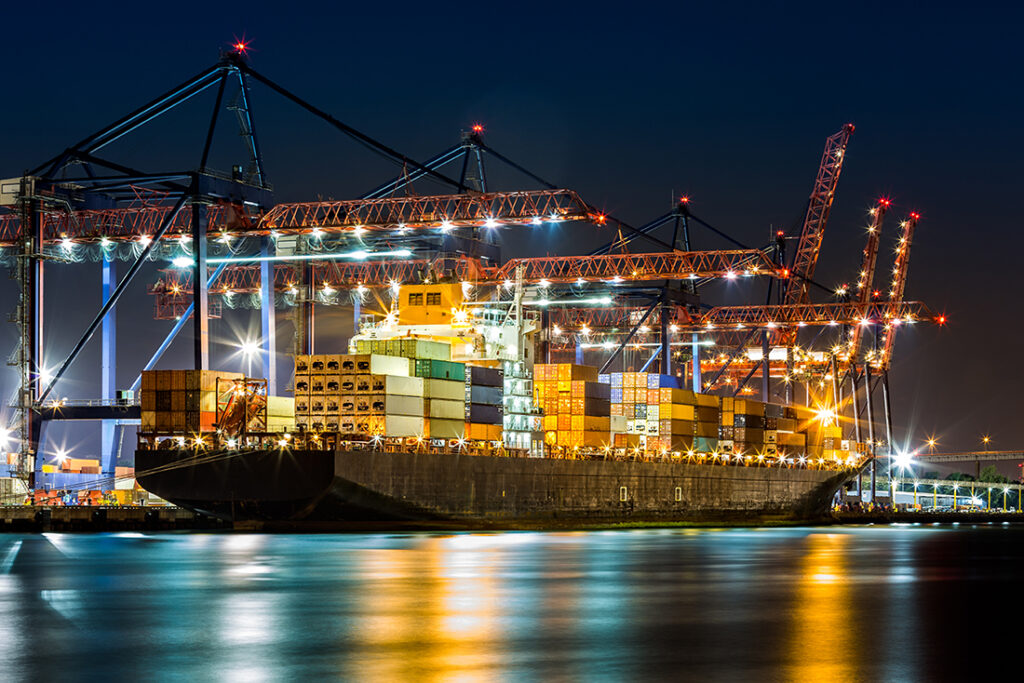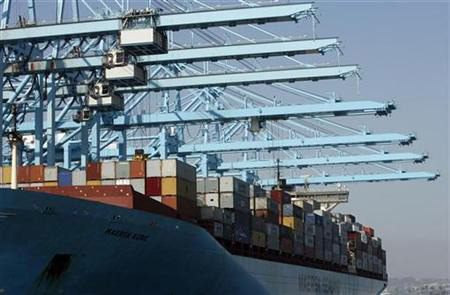
On Tuesday this week, at precisely 12:01 a.m., 45,000 dockworkers in 36 ports up and down the East Coast and throughout the Gulf of Mexico went on strike. That sentence should send a shiver down your spine because, yes folks, a new supply chain nightmare has begun. This possibility has been on my radar screen for a couple of weeks, but I hesitated to write about it because I was hopeful that negotiations would yield a resolution that would prevent this nightmare from happening…and then I would have been accused of fear mongering.
But negotiations did not yield a solution…so here we are!
See more on a new supply chain nightmare
Warning! Warning! This is NOT a drill!
A Deeper Dive into What This is All About
I want to say that there’s good news and bad news in this situation with a work stoppage at 36 ports. That’s basically true, but the bad may outweigh the good. So let’s dig a little deeper into just what the situation is that we find thrust upon us.
As I mentioned above, this labor action by members of the International Longshoremen’s Association impacts 36 ports – everything from Maine on the East Coast down around Florida and on to Texas in the Gulf of Mexico. Not only are 36 ports a lot of ports to have a work stoppage at, but this number includes 5 of the Top 10 largest ports in the entire United States.
These Ports Handle 60% of All Goods Coming Into the U.S.
These ports collectively handle about 60% – the majority – of all of the goods that come into the United States from around the world. There is a wide selection of goods impacted, mostly in the retail to automotive to produce areas, according to the newsletter Morning Brew.
West Coast ports are not involved in this action and remain open.
This is a big action and it will impact the U.S. economy…especially if it gets dragged out over weeks or months. Analysts at JP Morgan estimate that this strike will cost the economy about $5 billion in economic damage…EVERY DAY.
What The Strike is All About
What are the issues? There are two main issues: 1) Pay – The union is demanding a 77% pay increase over the next six-year term of this agreement (the United States Maritime Alliance, the organization representing the port operators, has offered a 50% pay increase which was angrily rejected by the workers’ union); 2) Automation – Much like when the writers in Hollywood went on strike over AI automating the process of writing stories and scripts, dock workers are really, really concerned about port operators implementing robots to automate many labor-intensive jobs.
The stakes are very high. The potential for disruption is significant.
Kathy Hochul, Governor of the State of New York to the New York Times
Both Sides of the Issue Seem Far Apart
Both sides remain pretty far apart on the issues. As far as the pay, a 77% pay increase (over the six years of the contract) sounds like a ridiculous demand, but the workers’ union points out that the last six-year contract that expired Tuesday morning only provided workers an 11% raise over that period of time. But inflation jumped 24% over the same period which effectively meant workers’ pay was going backwards.
The average pay for dock workers on the West Coast is $220,000 (including overtime). Yes, you read that right. On the East Coast, the average dock worker makes between $100,000-$200,000 – so some of this issue is seeking parity with the West Coast. But Ports are struggling with spiraling costs. For the port, automation, and robotics will help them bend their cost curve in a more reasonable direction.
The First Strike at These Ports Since 1977
This is the first strike of this level of significance at these ports since 1977. Both sides claim the other side is failing to negotiate in good faith. I.L.A. spokesperson Jim McNamara told the New York Times that “…the Maritime Alliance had refused the union’s demands ‘for a fair and decent contract.'”
My I.L.A. members are not going to accept these insulting offers that are a joke considering the work my I.L.A. longshore workers perform, and the billion-dollar profits the companies make off the backs of their labor.
Harold J. Daggett, President of the International Longshoremen’s Association to the NY Times
There is Some Good News at Least
Let’s get to some of the good news. Because this deadline has been approaching for some time, and the negotiations have been going poorly for nearly as long, many companies bringing in goods to the United States accelerated their receiving schedules to get items in before the onset of the strike.
There are other adjustments companies can make. For example, they can redirect their incoming goods to West Coast ports which are still open and operating. However, depending on where the goods are coming from, this could add to the cost of the shipment. Also, goods needed in the East, but brought into Western ports means they’ll need to be transferred by rail or truck across the country. Again, this adds to cost and time delays.
Ports Have Added Resources Since COVID
The COVID pandemic forced the world to face vexing and costly supply chain issues. Now that these issues were resolved, we’ve learned some valuable lessons from that experience. One of those lessons was that ports needed more bandwidth or flexibility to handle elevated shipments of goods – with more storage space and expanded operations.
So, you may ask, if the West Coast ports are open, and have expanded capabilities, why doesn’t everybody just redirect EVERYTHING to the West Coast ports? They would quickly become overloaded. Ports in the West have more capability, but not more than double their typical daily load.
Open Ports Could Become Quickly Overwhelmed
The operations manager of the massive Port of Long Beach, California recently told the Times that they are currently operating at 73% of their max capacity. If all incoming shipments were rediverted West, these ports would quickly become overwhelmed.
One final bit of good news – much of the goods used in technology are already imported via West Coast ports. So, assuming operations at these ports stay within capacity, our industry may dodge the bullet and not suffer too badly.
Be Forewarned and Be Prepared
Still, it would be wise to speak with your important vendors to have a grip on your particular situation. One thing we all learned during the pandemic, those who most aggressively chased incoming inventory fared much better than those who more passively waited to hear from their suppliers.
Forewarned is forearmed…






Keep up the good work!
Thanks Abogado!